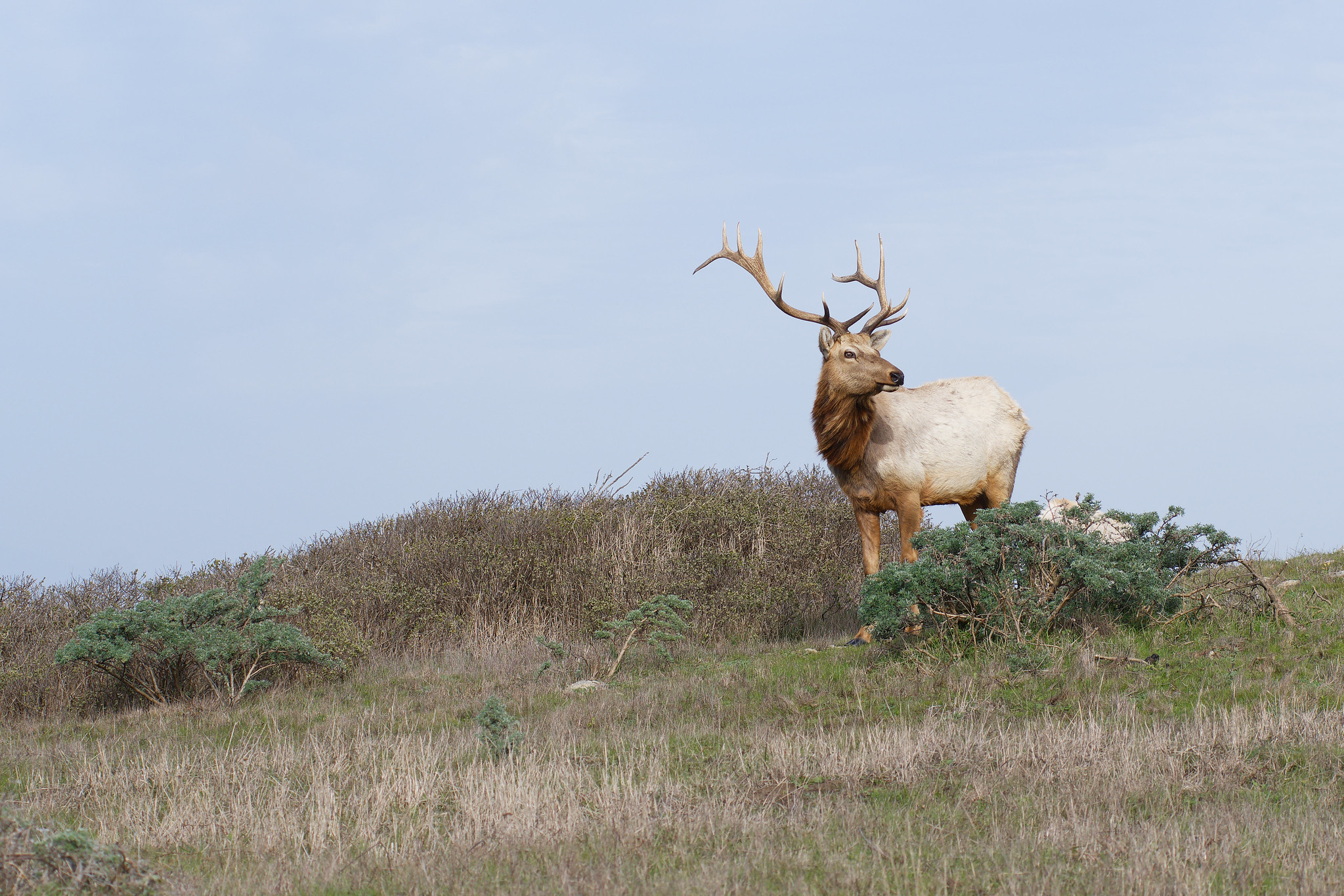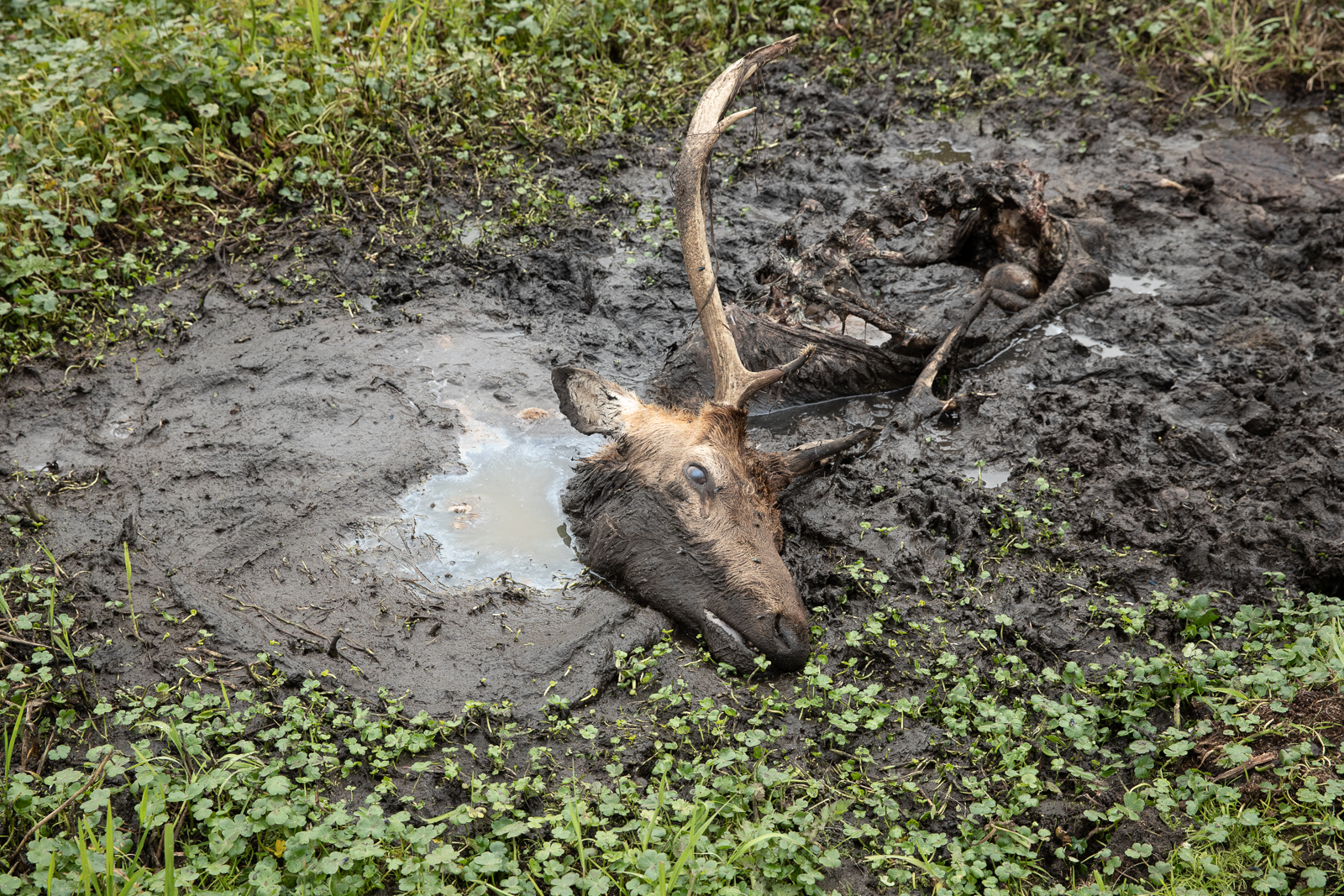By Jim Coda

The Sierra Club has become extremely concerned about Point Reyes National Seashore’s management of the 2,600-acre Tomales Point Elk Reserve, where tule elk are held captive behind an eight-foot, woven-wire fence. 254 individual elk (47% of the population) died there during the 2012-2015 drought while the wild, free-roaming Drakes Beach and Limantour herds increased. We are now in another drought. The Seashore allowed another 152 elk to die in the Tomales Point enclosure last year. During that same period, the Drakes Beach herd increased by one individual and the Limantour herd declined by nine individuals, possibly due, in whole or in part, to the Woodward Fire.
The Sierra Club fears that with this current drought year, which may be Point Reyes’ worst drought year ever, another 100 to 200 captive elk will be lost. And it’s possible that 2022 could be yet another drought year. Something needs to be done. The Park Service cannot enclose elk or other wildlife behind an eight-foot-tall, woven-wire fence without being responsible for their needs.
The Sierra Club and many others have been very concerned over whether the captive elk have adequate water sources in the enclosure, especially during these droughts. The Seashore has responded that water sources in the form of creeks, springs, and seeps have been adequate and provided a map marking water locations. However, concerned citizens have visited many of the Seashore’s marked sites, only to find just small amounts of water inside muddy elk hoof prints—not enough water for the elk to survive.
Because of this, concerned citizens have placed troughs filled with water in the elk enclosure on at least three occasions. Each time, the Seashore has removed them. The last time this occurred was earlier this May.
The Sierra Club learned that the Seashore’s outreach coordinator, Melanie Gunn, wrote in a May 17, 2021 email to a concerned citizen that “[t]he National Park Service (NPS) is anticipating providing water to the tule elk at Tomales Point as many of the seeps, springs, and creeks are drying during this drought.” (Emphasis added.) This statement comes only a couple of weeks after the Seashore emptied and confiscated the most recent water troughs mentioned above.
Water is not the only issue. The Seashore has readily admitted on numerous occasions that the captive elk lack adequate forage in times of drought. The Seashore has also made clear that the forage at Tomales Point lacks two essential minerals, namely copper and selenium. Six necropsies done last year showed that those six elk starved to death and were chronically deficient in copper and selenium. The two wild, free-roaming Drakes Beach and Limantour herds don’t seem to have these problems, as witnessed by the absence of similar die-offs. While the Seashore has emphasized for many years that the problem is more due to the lack of forage than a lack of water, there was no mention by Ms. Gunn of any plan to provide forage and mineral blocks containing copper and selenium for the dying elk.

Photo courtesy of © Matthew Polvorosa Kline.
This situation is inhumane and unacceptable. The Seashore should prepare a General Management Plan (GMP) Amendment for management of the Tomales Point lands, given the 1980 GMP is now 41 years old and barely mentions Tomales Point and the captive elk. While a 1998 elk plan was written, it did not purport to be an updated GMP. It only addressed what to do with an excess number of elk in the enclosure. It did not address how Tomales Point should be managed, including whether it is even a suitable location for elk given its obvious problems with water, forage and minerals. Furthermore, it was written 23 years ago. Things have changed significantly since then, including the deaths of over 400 elk in recent years, worsening droughts, and other environmental impacts from climate change. The Park Service’s own policies recommend that GMPs be reviewed and updated every 10 to 15 years.
The GMP Amendment should also be accompanied by an environmental impact statement. Finally, because the captive elk will continue to perish in these drought conditions, the Seashore must ensure that no more die during the GMPA planning process by committing to provide adequate water, forage and minerals to each of the four Tomales Point elk herds as needed.
Elk are dying now. The Sierra Club wrote a letter to Superintendent Craig Kenkel detailing these concerns on May 25th and stated that they would appreciate a response within two weeks. These inhumane conditions must be changed.
Update: The National Park Service provided an update on June 11th, 2021, indicating they have placed water troughs within the Tomales Point reserve for the tule elk.
Top photo: A tule elk bull in Tomales Point Elk Reserve by Douglas via Flickr Creative Commons.